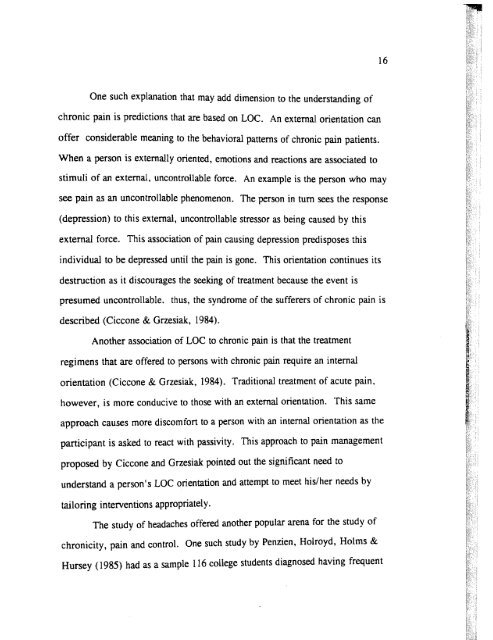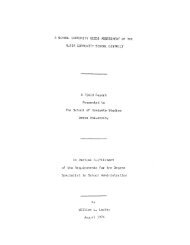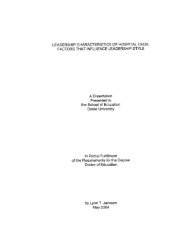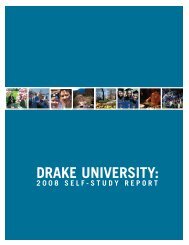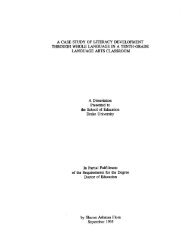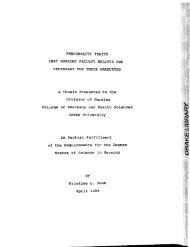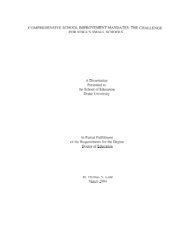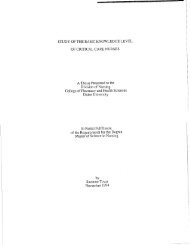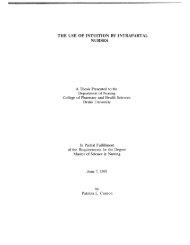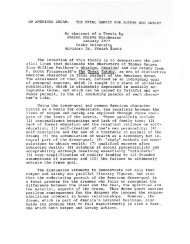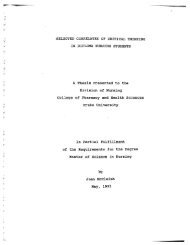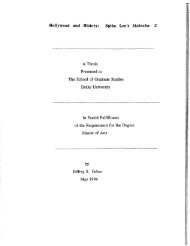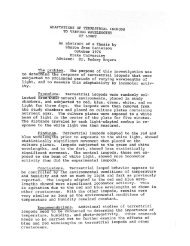LOCUS OF CONTROL ORIENTATION AND LEVEL - Drake University
LOCUS OF CONTROL ORIENTATION AND LEVEL - Drake University
LOCUS OF CONTROL ORIENTATION AND LEVEL - Drake University
Create successful ePaper yourself
Turn your PDF publications into a flip-book with our unique Google optimized e-Paper software.
One such explanation that may add dimension to the understanding of<br />
chronic pain is predictions that are based on LOC. An external orientation can<br />
offer considerable meaning to the behavioral patterns of chronic pain patients.<br />
When a person is externally oriented, emotions and reactions are assmiat4 to<br />
stimuli of an external, uncontrollable force. An example is the person who may<br />
see pain as an uncontrollable phenomenon. The person in turn sees the response<br />
(depression) to this external, uncontrollable stressor as being caused by this<br />
external force. This association of pain causing depression predisposes this<br />
individual to be depressed until the pain is gone. This orientation continues its<br />
destruction as it discourages the seeking of treatment because the event is<br />
presumed uncontrollable. thus, the syndrome of the sufferers of chronic pain is<br />
described (Ciccone & Gnesiak, 1984).<br />
Another association of LOC to chronic pain is that the treatment<br />
regimens that are offered to persons with chronic pain require an internal<br />
orientation (Ciccone & Grzesiak, 1984). Traditional treatment of acute pain,<br />
however, is more conducive to those with an external orientation. This same<br />
approach causes more discomfort to a person with an internal orientation as the<br />
participant is asked to react with passivity. This approach to pain management<br />
proposed by Ciccone and Grzesiak pointed out the significant need to<br />
undersmd a person's LQC orientation and attempt to meet hislher needs by<br />
tailoring interventions appropriately.<br />
The study of headaches offered another popular arena for the study of<br />
chronicity, pain and control. One such study by Penden, Holroyd, Helms &<br />
Hursey (1985) had as a sample 116 college students diagnosed having frequent


